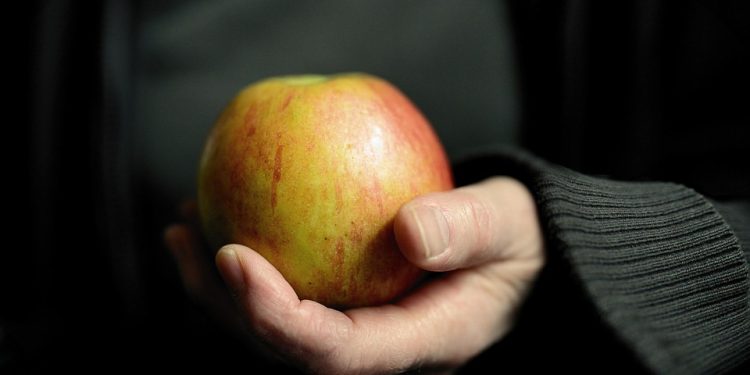Intermittent Fasting Meals: Your Quick Start Guide
Intermittent fasting (IF) has gained immense popularity as a powerful tool for weight management, improved metabolic health, and even enhanced brain function. But beyond the “when” of eating lies the crucial “what.” What you eat during your eating window significantly impacts your IF results. This guide will provide you with a quick start to understanding intermittent fasting meals, helping you optimize your choices for maximum benefits.
Understanding the Basics of Intermittent Fasting
Before diving into meal specifics, let’s quickly recap intermittent fasting. IF isn’t a diet but rather an eating pattern. It cycles between periods of eating and voluntary fasting on a regular schedule. Common IF methods include:
- 16/8 Method: Fasting for 16 hours and eating within an 8-hour window. This is a popular and relatively easy starting point.
- 5:2 Diet: Eating normally for five days a week and restricting calories (around 500-600) on two non-consecutive days.
- Eat-Stop-Eat: Fasting for 24 hours once or twice a week.
- Alternate-Day Fasting: Fasting every other day. This method can be more challenging.
The key is to choose a method that fits your lifestyle and preferences. Remember to consult your doctor before starting any new dietary regimen, especially if you have underlying health conditions.
What to Eat During Your Eating Window: Fueling Your Body Right
While you can technically eat anything during your eating window, focusing on nutrient-dense foods is essential for maximizing the benefits of intermittent fasting and ensuring you feel energized and satisfied. Aim for a balanced approach that includes:
Prioritize Protein
Protein is crucial for building and repairing tissues, promoting satiety, and preserving muscle mass, especially during periods of calorie restriction. Include a good source of protein in each meal during your eating window.
Examples of Excellent Protein Sources:
- Lean Meats: Chicken breast, turkey breast, lean beef, pork tenderloin.
- Fish and Seafood: Salmon, tuna, cod, shrimp, mackerel. These are also great sources of omega-3 fatty acids.
- Eggs: A versatile and affordable protein source.
- Dairy: Greek yogurt, cottage cheese, milk (if tolerated).
- Plant-Based Protein: Lentils, beans, chickpeas, tofu, tempeh, edamame. Consider combining different plant-based proteins to ensure you get all essential amino acids.
- Protein Powders: Whey, casein, soy, pea, rice, hemp protein (useful for supplementing your diet, especially after workouts).
Example Meal: Grilled chicken salad with mixed greens, avocado, and a light vinaigrette dressing.
Embrace Healthy Fats
Healthy fats are essential for hormone production, brain function, and nutrient absorption. They also help you feel full and satisfied, reducing cravings.
Examples of Healthy Fat Sources:
- Avocados: Packed with nutrients and healthy monounsaturated fats.
- Nuts and Seeds: Almonds, walnuts, chia seeds, flaxseeds, hemp seeds.
- Olive Oil: Use extra virgin olive oil for cooking and salad dressings.
- Fatty Fish: Salmon, tuna, mackerel.
- Coconut Oil: Use in moderation.
Example Meal: Salmon with roasted vegetables drizzled with olive oil.
Load Up on Non-Starchy Vegetables
Non-starchy vegetables are low in calories, high in fiber, and packed with vitamins and minerals. They are a cornerstone of a healthy intermittent fasting meal plan.
Examples of Non-Starchy Vegetables:
- Leafy Greens: Spinach, kale, lettuce, arugula.
- Cruciferous Vegetables: Broccoli, cauliflower, Brussels sprouts, cabbage.
- Other Vegetables: Peppers, onions, tomatoes, cucumbers, zucchini, asparagus.
Example Meal: Stir-fry with chicken, broccoli, peppers, and onions.
Choose Smart Carbohydrates
While you don’t need to eliminate carbohydrates entirely, prioritize complex carbohydrates over refined carbs. Complex carbs provide sustained energy and are rich in fiber.
Examples of Smart Carbohydrate Choices:
- Whole Grains: Quinoa, brown rice, oats, whole wheat bread (in moderation).
- Legumes: Lentils, beans, chickpeas.
- Starchy Vegetables: Sweet potatoes, potatoes (in moderation).
- Fruits: Berries, apples, bananas (in moderation due to sugar content).
Example Meal: Oatmeal with berries and nuts.
What to Drink During Your Fasting Window
Staying hydrated is crucial during intermittent fasting. However, you need to be mindful of what you consume during your fasting window.
Acceptable Drinks During Fasting:
- Water: The best choice for hydration.
- Black Coffee: Without sugar, milk, or cream.
- Unsweetened Tea: Green tea, black tea, herbal tea.
- Electrolyte Drinks: (Without sugar or calories) Can help replenish electrolytes, especially during longer fasts.
Avoid These Drinks During Fasting:
- Sugary Drinks: Soda, juice, sweetened tea, sweetened coffee.
- Milk and Cream: Contain calories and can break your fast.
- Alcohol: Contains calories and can disrupt your fast.
- Diet Soda: Artificial sweeteners may trigger an insulin response in some individuals.
Sample Intermittent Fasting Meal Plans (16/8 Method)
Here are a few sample meal plans using the 16/8 method as an example. Remember to adjust portion sizes based on your individual needs and calorie goals.
Meal Plan 1: Focus on Protein and Vegetables
- 12:00 PM (First Meal): Large salad with grilled chicken, mixed greens, avocado, and a light vinaigrette dressing.
- 4:00 PM (Second Meal): Salmon with roasted broccoli and quinoa.
- 8:00 PM (Final Meal): Greek yogurt with berries and almonds.
Meal Plan 2: Balancing Macronutrients
- 10:00 AM (First Meal): Oatmeal with protein powder, berries, and nuts.
- 2:00 PM (Second Meal): Turkey breast sandwich on whole wheat bread with lettuce, tomato, and avocado.
- 6:00 PM (Final Meal): Lentil soup with a side salad.
Meal Plan 3: Plant-Based IF
- 11:00 AM (First Meal): Tofu scramble with spinach and whole-wheat toast.
- 3:00 PM (Second Meal): Chickpea salad sandwich on whole-grain bread with sprouts and cucumber.
- 7:00 PM (Final Meal): Lentil curry with brown rice.
Tips for Success with Intermittent Fasting Meals
- Plan Your Meals in Advance: This helps you make healthier choices and avoid impulsive decisions.
- Listen to Your Body: Adjust your eating window and meal sizes based on your hunger and fullness cues.
- Stay Hydrated: Drink plenty of water throughout the day.
- Don’t Overeat During Your Eating Window: Intermittent fasting is not an excuse to binge on unhealthy foods.
- Be Patient: It may take some time for your body to adjust to intermittent fasting.
- Consider a Gradual Approach: Start with a shorter fasting window and gradually increase it as you get more comfortable.
- Focus on Whole, Unprocessed Foods: Prioritize nutrient-dense foods over processed foods.
- Track Your Progress: Monitor your weight, body composition, and overall health to see how intermittent fasting is working for you.
- Prioritize Sleep: Adequate sleep is essential for overall health and can help regulate hunger hormones.
- Manage Stress: Stress can lead to overeating and sabotage your intermittent fasting efforts. Find healthy ways to manage stress, such as exercise, yoga, or meditation.
Conclusion
Intermittent fasting can be a powerful tool for improving your health and well-being. However, the key to success lies in making smart food choices during your eating window. By focusing on protein, healthy fats, non-starchy vegetables, and smart carbohydrates, you can fuel your body with the nutrients it needs to thrive. Remember to listen to your body, stay hydrated, and be patient as you adjust to this new eating pattern. With the right approach, you can reap the many benefits of intermittent fasting and achieve your health goals.
Frequently Asked Questions (FAQs)
Here are some common questions about intermittent fasting and meal planning:
Q: Can I exercise while intermittent fasting?
A: Yes, you can exercise while intermittent fasting. Many people find that exercising during their fasted state can enhance fat burning. However, listen to your body and adjust your workout intensity accordingly. It’s generally recommended to consume protein and carbohydrates after your workout to aid in recovery and muscle growth during your eating window.
Q: Will I lose muscle mass while intermittent fasting?
A: It’s possible to lose some muscle mass if you’re not consuming enough protein or if you’re consistently in a large calorie deficit. Prioritize protein intake during your eating window and consider resistance training to help preserve muscle mass.
Q: Is intermittent fasting safe for everyone?
A: Intermittent fasting is not suitable for everyone. It’s not recommended for pregnant or breastfeeding women, individuals with a history of eating disorders, or people with certain medical conditions such as type 1 diabetes or adrenal fatigue. Consult your doctor before starting intermittent fasting.
Q: What if I feel hungry during my fasting window?
A: Hunger is common when you first start intermittent fasting. You can try drinking water, black coffee, or unsweetened tea to help suppress your appetite. Over time, your body will adapt to the new eating pattern, and you’ll likely experience less hunger during your fasting window.
Q: Can I have artificial sweeteners during my fasting window?
A: While some people consume artificial sweeteners during their fasting window without any issues, others may experience an insulin response, which could technically break the fast. It’s best to avoid them during your fasting window, especially if you are unsure how your body will react.
Q: How do I know if intermittent fasting is right for me?
A: The best way to find out if intermittent fasting is right for you is to try it and see how you feel. Start with a simple method like the 16/8 and gradually increase the fasting window as you get more comfortable. Pay attention to your energy levels, mood, and overall health. If you experience any negative side effects, stop intermittent fasting and consult your doctor.
Q: Can I eat the same thing every day during my eating window?
A: While it’s fine to have some go-to meals, it’s important to eat a variety of foods to ensure you’re getting all the nutrients your body needs. Vary your protein sources, vegetables, and carbohydrates to maximize your nutrient intake.
Q: How long should I do intermittent fasting for?
A: You can do intermittent fasting for as long as it feels good and you’re seeing positive results. Some people do it for a few weeks or months to achieve specific goals, while others make it a long-term lifestyle choice. There’s no one-size-fits-all answer, so listen to your body and do what works best for you.
Q: What are the potential benefits of intermittent fasting?
A: Intermittent fasting has been linked to a variety of potential benefits, including weight loss, improved insulin sensitivity, reduced inflammation, and enhanced brain function. However, more research is needed to fully understand the long-term effects of intermittent fasting.












